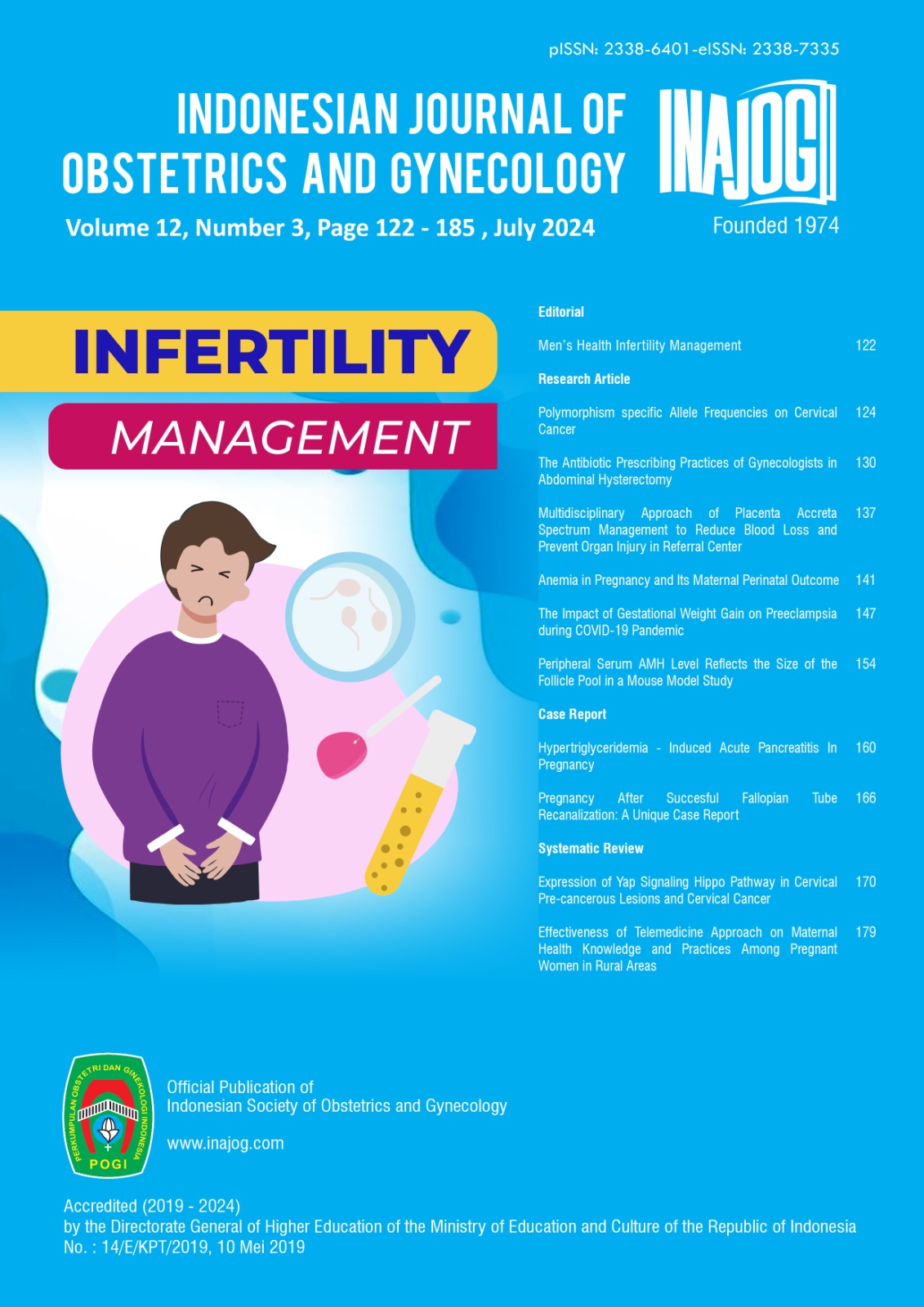Peripheral Serum AMH Level Reflects the Size of the Follicle Pool in a Mouse Model Study
Abstract
Objective: This is to compare peripheral and central serum levels of Anti-Mullerian hormone (AMH) in experimental animals for predicting ovarian reserve.
Methods: This is an experimental study involving 20 female Sprague-Dawley rats aged 8–10 weeks with normal estrus cycles as the young control group and 5 female rats aged 28–30 weeks as the old control group (n = 5/group): the young control group, the old control group, the 1x cisplatin group, the 2x cisplatin group, and the 3x cisplatin group. After treatment, tissue collection, histological staining, and blood collection through the retro-orbital bleeding (ROB) and heart were performed. Subsequently, measurements of ovarian weight, follicle counting, and levels of AMH and Follicle-stimulating hormone (FSH) were conducted.
Results: The serum AMH levels from ROB in the young control, 1x cisplatin, 2x cisplatin, 3x cisplatin, and the old control groups were 1151, 1818, 2782.96, 1381.352, and 1544 ng/mL, respectively. Cisplatin 2x group was significantly (p<0.005) higher compared to the young control. The average concentrations of serum AMH in the ROB and heart were higher in the 2x cisplatin group compared to the other groups. Meanwhile, cisplatin 3x group decreased in level due to the burn out phenomenon.
Conclusion: AMH is a preferred marker compared to FSH. Blood collection through the ROB is considered a less invasive alternative technique in the treatment group, requiring serial observation.
Keywords: AMH, follicle pool, ovarian aging, ROB
Downloads
Copyright (c) 2024 Indonesian Journal of Obstetrics and Gynecology

This work is licensed under a Creative Commons Attribution-NonCommercial-ShareAlike 4.0 International License.












